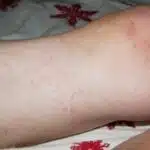As a laundry care specialist, I have encountered numerous cases of salad dressing stains on clothing and fabrics. These stains can be stubborn and difficult to remove if not treated promptly and properly. In this article, I will provide you with effective tips and techniques on how to remove salad dressing stains from various types of fabric.
Salad dressing stains can occur at any time, whether you are enjoying a delicious meal at home or dining out with friends. These stains can ruin your favorite outfit and leave an unsightly mark that can be challenging to remove. However, with the right approach and tools, these stains can be eliminated successfully without causing any further damage to your clothing or fabrics. In the following paragraphs, we will explore the different types of salad dressings that commonly cause stains, the steps you need to take when treating these stains and some useful tips for preventing them from happening in the first place.
Types Of Salad Dressings That Commonly Cause Stains
As a laundry care specialist, it is important to understand the types of salad dressings that commonly cause stains. One such dressing is vinaigrette, which contains ingredients such as vinegar and oil that can leave behind stubborn stains on clothing. Another culprit is creamy dressings like ranch or Caesar, which contain mayonnaise and other oils that can seep into fabrics and leave marks.
To prevent salad dressing stains from ruining your clothes, there are a few tips you can follow. First, always be mindful when eating and try to avoid spills by using utensils instead of dipping directly into the dressing bowl. Additionally, consider wearing an apron when preparing or consuming salads to protect your clothing from potential stains.
Understanding the composition of salad dressing stains is crucial in effectively removing them from clothing. In the following section, we will delve deeper into the various ingredients found in different types of dressings and how they impact fabric fibers. By gaining this knowledge, you will be better equipped to tackle any pesky salad dressing stains that may come your way.
Understanding The Composition Of Salad Dressing Stains
As discussed in the previous section, salad dressings can leave stubborn stains on fabrics. Understanding stain chemistry is crucial to effectively remove these stains. Salad dressings are made up of various ingredients that contribute to their unique flavors and textures. However, some of these ingredients are notorious for causing stains.
Common ingredients in salad dressings that cause stains include oil, vinegar, mayonnaise, and mustard. Oil-based dressings like Caesar and Italian are particularly challenging to remove because oil repels water. Vinegar, on the other hand, is acidic and can weaken fabric fibers. Mayonnaise and mustard contain pigments that can leave yellow or brownish stains on clothes.
To effectively remove salad dressing stains from clothing, it’s essential to act quickly using the appropriate cleaning method based on the type of fabric. Avoid rubbing or scrubbing the stain as this can worsen it. Instead, follow these steps:
- Blot up any excess dressing with a clean cloth or paper towel.
- Apply a pre-treatment solution directly to the stain and let it sit for several minutes before washing.
- Wash the garment in cold water with a laundry detergent designed for removing tough stains.
- Check if the stain is completely removed before drying as heat can set in residual stains.
By understanding how salad dressing stains work and taking immediate action using proper cleaning methods, you can successfully remove them from your clothes without causing additional damage to your garments’ fibers.
Moving forward into identifying the fabric type…
Identifying The Fabric Type
Before attempting to remove any type of stain, it is essential to identify the fabric type. Different fabrics require different cleaning methods, and applying the wrong method can lead to irreversible damage. The label on the garment usually provides information regarding its composition and care instructions. However, if the label is missing or unreadable, there are other ways to determine the fabric type.
One way to identify the fabric type is through a burn test. This involves burning a small piece of fabric and observing how it burns and smells. For example, natural fibers like cotton or linen will burn slowly and produce an odor similar to burning paper. On the other hand, synthetic fibers like polyester or nylon will melt and produce a sweet smell. It is essential to exercise caution when conducting a burn test by doing it in a well-ventilated area with appropriate safety measures.
Once you have identified the fabric type, you can proceed with testing stain removal methods. It is recommended to test any stain removal method on an inconspicuous area of the garment first before treating the stain directly. This helps ensure that no further damage occurs during the cleaning process. Additionally, some fabrics may react differently to certain cleaning agents or procedures, so it is always best to err on the side of caution.
Transition into subsequent section: Now that you have identified your fabric type and tested your stain remover method, let’s move onto pre-treating your stain for optimal results.
Pre-Treating The Stain
Pre-treating the stain is a crucial step in removing salad dressing stains. Pre-treating alternatives depend on the type of fabric and the severity of the stain. For instance, for delicate fabric like silk, it is advisable to use mild pre-treatment alternatives. On the other hand, for robust fabrics such as cotton and polyester, more potent pre-treatment alternatives can be used.
Quick stain removal methods are ideal when dealing with emergency situations. The first step is to act fast before the stain sets into the fabric. Blotting the stain with a clean cloth or paper towel will absorb any excess oil from the dressing. Avoid rubbing as it can spread the stain further, making it harder to remove.
Another alternative is using pre-stain remover products that contain enzymes that break down oil-based stains like salad dressing. Alternatively, one can opt for natural pre-treatments like vinegar or lemon juice mixed with water to break down stains before washing. It’s important to remember to test any pre-treatment solutions on a small area first before applying them to larger areas of fabric.
Moving forward, using household items for stain removal is an effective method that saves time and money. However, it’s essential to use them appropriately depending on the type of fabric and severity of the stain. In this next section, we’ll explore different household items that can be used for salad dressing stains removal and how they should be applied for maximum effectiveness.
Using Household Items For Stain Removal
After pre-treating the salad dressing stain, it’s time to move on to using household items for stain removal. This section will focus on two effective natural ingredients that you might already have in your kitchen: vinegar and baking soda, and lemon juice and salt.
Vinegar and baking soda are a powerful combination when it comes to removing stains. First, mix equal parts water and white vinegar in a spray bottle. Spray the mixture onto the stain and let it sit for five minutes. Then, sprinkle baking soda over the stain and gently rub it in with a soft-bristled brush. Let the mixture sit for another 15 minutes before washing the item as usual.
Another household item that can be used to remove salad dressing stains is lemon juice and salt. Cut a fresh lemon in half and squeeze the juice onto the stained area, making sure to saturate it thoroughly. Then, sprinkle salt over the area until it is completely covered. Rub the salt into the fabric with your fingers or a soft-bristled brush, then let it sit for 30 minutes before washing as usual.
Next up is applying commercial stain removers, which can be particularly effective for tough stains that won’t come out with natural remedies alone.
Applying Commercial Stain Removers
Commercial stain removers are effective in removing tough salad dressing stains from clothing. These products contain enzymes and other chemicals that break down the proteins and oils in the stain, making it easier to wash away. There are various commercial stain removers available on the market, including sprays, gels, and powders.
When using a commercial stain remover, it is important to follow the instructions carefully. Apply the product directly to the stain and let it sit for at least 5-10 minutes before washing. Be sure to test the product on a small area of the fabric first to ensure that it does not cause any damage or discoloration. Additionally, avoid using too much product as this can lead to buildup and damage to the fabric over time.
While commercial stain removers can be effective, homemade remedies may also work just as well. For example, mixing equal parts baking soda and water into a paste and applying it directly to the stain before washing can help break down the oils and proteins in salad dressing stains. Other household items such as vinegar or dish soap may also be effective in removing stains when used properly. Remember to always test these solutions on a small area of fabric before applying them to larger stains or delicate fabrics.
Moving forward, there are various tips for removing stains on delicate fabrics that should be considered. From hand-washing with gentle detergents to avoiding hot water and excessive agitation during laundering, proper care is essential for preserving these delicate items while effectively removing unsightly stains.
Tips For Removing Stains On Delicate Fabrics
“Handle with Care: Tips for Removing Stains on Delicate Fabrics”
As a laundry care specialist, I understand the importance of delicate fabric care. Delicate fabrics contain fibers that are easily damaged by harsh chemicals or rough handling during the washing process. Hence, it is crucial to handle them with utmost care to prevent damage and prolong their lifespan.
Stain prevention tips are essential when dealing with delicate fabrics. Prevention is always better than cure. Therefore, it is important to avoid exposing delicate fabrics to substances that may cause stains, such as makeup, oil-based foods like salad dressing, and other colored liquids. Additionally, try to remove any stains as soon as possible before they can set in deeper into the fabric.
Despite our best efforts to prevent stains from occurring, accidents do happen. When treating stains on delicate fabrics, it is important not to use hot water or bleach-containing products as they can damage the fibers and cause discoloration. Instead, try using gentle detergents and stain removers specifically formulated for delicate fabrics. Always test a small area first before applying any product on the entire garment to ensure that it does not cause further damage.”
Transitioning into the next section:
“Another important aspect of treating stains on delicate fabrics is avoiding heat. Heat can set in stains deeper into the fabric and make them more difficult to remove. In the next section, we will discuss some tips for avoiding heat when treating stains.”
Avoiding Heat When Treating Stains
It is important to avoid using heat when treating stains, as high temperatures can set the stain and make it more difficult to remove. Heat can also cause the stain to spread and penetrate deeper into the fabric. Instead, opt for cold water and gentle detergents when attempting to remove a stain.
One effective method for removing salad dressing stains is using vinegar. Vinegar is a natural cleaning agent that can break down the oils in the dressing and lift them from the fabric. To use vinegar for stain removal, mix equal parts white vinegar and water, then apply the solution directly onto the stained area. Let it sit for 10-15 minutes before washing as usual.
Another way to prevent stains from setting in is by incorporating stain resistant fabrics into your wardrobe. These fabrics are designed to repel liquids and prevent them from seeping into the fibers of your clothing. Look for materials like polyester or nylon blends, which are known for their resistance to stains. By making this small change in your clothing choices, you can save yourself time and stress in dealing with stubborn stains.
As we have seen, avoiding heat when treating stains is crucial in preventing them from becoming more difficult to remove. Using vinegar as a natural cleaning agent can effectively remove salad dressing stains without causing damage to your clothes. Additionally, incorporating stain resistant fabrics into your wardrobe is a proactive measure that can help you avoid future staining mishaps. In our next section, we will discuss another important step in keeping your clothes looking their best: washing them immediately after wearing.
The Importance Of Washing Clothes Immediately
- Properly caring for clothing can help prevent staining and fading, and extend fabric life.
- Washing clothes immediately can also help eliminate odors, minimize allergens, and prevent mold growth.
- Sanitizing clothes can help reduce the spread of bacteria and improve overall hygiene.
- Additionally, washing clothes immediately can save time and money, and enhance the appearance and comfort of the clothing.
Preventing Stains
Are you tired of dealing with stubborn salad dressing stains on your clothes? As a laundry care specialist, I can tell you that preventing spills is the best way to avoid these pesky stains. When handling salad dressings, it’s important to be extra careful as they can easily spill onto your clothes. To prevent this from happening, always open and close the bottle carefully and avoid shaking it vigorously.
Another effective way to prevent salad dressing stains is by storing them properly. Make sure to keep the bottles upright and in a secure place away from any edges or corners where they could easily topple over. Additionally, if you’re transporting salads with dressing, consider using leak-proof containers or small packets of dressing instead of carrying an entire bottle with you.
By following these simple tips for preventing spills and proper storage of salad dressings, you can significantly reduce the chances of getting unsightly stains on your clothes. Remember that prevention is key when it comes to laundry care, so take the necessary steps to avoid having to deal with tough stain removal later on.
Avoiding Odors
As a laundry care specialist, I understand the importance of washing clothes immediately to prevent bad odors from setting in. When clothing is left unwashed for too long, sweat and bacteria can accumulate, leading to unpleasant smells that are difficult to remove. To avoid this problem, it’s essential to wash clothes as soon as possible after they’ve been worn.
There are also steps you can take to prevent bad odors from developing in the first place. One effective method is by using DIY air fresheners in your closet or drawers where you store your clothes. These can be made with natural ingredients such as baking soda, essential oils, and herbs that help absorb moisture and neutralize odors.
Another way to prevent bad odors is by properly airing out your clothes before storing them. Hang damp clothes up to dry completely before folding or storing them away. Also, make sure that your closet or storage area has adequate ventilation to allow air circulation and prevent musty smells from forming.
By following these tips for preventing bad odors and properly washing your clothes immediately after use, you can ensure that your garments remain fresh-smelling and clean for longer periods of time. Remember that taking care of your clothing not only helps maintain its appearance but also keeps you feeling confident and comfortable throughout the day.
Using The Right Detergent
One of the most crucial aspects of removing salad dressing stains is choosing the right detergent. In general, you have to choose between liquid and powder detergents. Although both types are effective in cleaning clothes, each has distinct characteristics that affect their performance in stain removal.
Liquid detergents are ideal for pre-treating stains as they penetrate deeper into fabric fibers compared to powders. They also dissolve easily in water and are less likely to leave residue on your clothes. On the other hand, powder detergents work best in removing ground-in dirt and stains since they contain enzymes that break down protein-based stains such as those from salad dressing.
Determining the right amount of detergent to use is also critical in removing salad dressing stains effectively. Using too much detergent can result in over-sudsing, which reduces the effectiveness of the cleaning process and leaves residue on your clothes. However, using too little detergent may not remove all of the oil-based salad dressing residues from your clothes.
As we’ve seen, choosing an appropriate detergent is essential when trying to remove salad dressing stains effectively. But it’s equally important not to use bleach with colored fabrics. In our next section, we’ll discuss how bleach can damage colored fabrics and what alternatives you can use instead.
Avoiding Bleach For Colored Fabrics
Properly removing salad dressing stains can be a challenging process, and using the right detergent is crucial for achieving successful results. However, in some cases, utilizing natural alternatives can prove to be just as effective while also being environmentally friendly. Using baking soda or vinegar mixed with water can serve as an alternative stain removal option that doesn’t require the use of harsh chemicals.
Another alternative option that should be considered when dealing with salad dressing stains is using dish soap. Dish soap is known for its ability to break down and remove grease, making it a great choice for oily salad dressings. This option is particularly useful for those who prefer not to use chemical-based detergents or are looking for a more cost-effective solution.
While bleach may seem like a tempting option when it comes to removing stubborn stains, it should be avoided for colored fabrics as it can cause discoloration and damage. Instead, opt for natural alternatives or alternative stain removal options that are gentle on both your clothes and the environment.
Transition: Now that we have explored various ways of removing salad dressing stains without causing harm to our clothes or the environment, let’s move on to discussing the importance of properly drying clothes after stain removal.
Drying Clothes After Stain Removal
After successfully removing salad dressing stains from your clothes, the next step is to dry them. There are two main methods of drying clothes: air drying and machine drying. Air drying involves hanging clothes on a line or rack and allowing them to dry naturally, while machine drying uses a dryer to quickly dry clothes using heat.
While machine drying can be more convenient and faster, it can also cause shrinkage in certain fabrics. To prevent this, always check the care label on your clothing for specific instructions on how to dry them. If possible, choose a lower heat setting or opt for air drying instead. Additionally, avoid overloading the dryer as this can also lead to shrinkage.
If you choose to air dry your clothes after removing salad dressing stains, there are a few tips to keep in mind. Firstly, hang your clothes outside in direct sunlight if possible as this will help to naturally sanitize them and remove any lingering odors. Secondly, make sure that they are hung evenly and not bunched up which can lead to wrinkles and misshapen garments.
In the next section, we will explore some tips for preventing salad dressing stains from happening in the first place. By following these tips and properly caring for your clothing after stain removal, you can ensure that your wardrobe remains fresh, clean and well-maintained.
Tips For Preventing Salad Dressing Stains
Preventing Salad Dressing Stains
Salad dressing stains can be a nuisance to deal with, but preventing them is possible. The key is to act quickly and take preventive measures. One way to prevent salad dressing stains is by wearing a bib or apron when eating. This will protect your clothing from any spills or splatters.
Another effective way to prevent salad dressing stains is by choosing stain-resistant fabrics for your clothing. Fabrics such as polyester or nylon are less likely to absorb the dressing and are easier to clean if they do become stained. Additionally, treating your clothing with a fabric protector spray can help repel the dressing and keep it from penetrating the fibers.
Lastly, it’s important to always read the care label on your clothing before washing. Some fabrics may require special care instructions, such as handwashing or dry cleaning only, in order to maintain their stain-resistant properties. By following these guidelines, you can ensure that your clothing stays looking its best and free from unsightly salad dressing stains.
Transition: While prevention is key, accidents still happen. If you find yourself dealing with a stubborn salad dressing stain on your upholstery or carpets, don’t worry – there are steps you can take to remove it effectively.
Handling Stains On Upholstery Or Carpets
As much as we try to prevent salad dressing stains, accidents happen. These unsightly spots can be a real pain to remove, especially if left untreated for too long. But fear not, there are effective ways to handle these stains and restore your garments to their former glory.
If you’re dealing with a fresh stain, act fast and blot the area with a clean cloth or paper towel to absorb as much of the dressing as possible. Avoid rubbing the stain as it may spread and push the dressing deeper into the fabric fibers. Once you’ve removed as much of the excess oil as possible, rinse the affected area under cold water from the back of the fabric. This will help push out any remaining oil and prevent it from setting in.
For DIY stain removal, mix equal parts baking soda and white vinegar into a paste and apply it onto the stain. Let it sit for 10-15 minutes before gently scrubbing with a soft-bristled brush or toothbrush. Rinse thoroughly with cold water and repeat if necessary until the stain is gone. Alternatively, you can use dish soap or laundry detergent mixed with cold water to pretreat the stain before washing in cold water.
However, for stubborn stains that refuse to budge despite your best efforts, seeking professional help may be your best bet. Professional cleaning services have access to specialized equipment and cleaning products that can effectively remove even the toughest of salad dressing stains without damaging your garments. Don’t let an unsightly salad dressing stain ruin your favorite clothes – try these tips for DIY removal first, but don’t hesitate to seek professional help if needed.
Seeking Professional Help For Stubborn Stains
Professional stain removal services are becoming increasingly popular due to their convenience and effectiveness. While many people opt for DIY stain removal methods, some stains can be particularly stubborn and require professional attention. Salad dressing stains, for example, can be challenging to remove completely without the proper equipment and knowledge.
One of the benefits of DIY stain removal is the cost-effectiveness it offers. With simple household items such as vinegar or baking soda, you can often remove common stains from clothing or upholstery without having to spend money on professional services. However, it’s important to note that not all stains are created equal, and some may require more than a quick home remedy.
When it comes to removing stubborn salad dressing stains or other difficult marks from fabrics or surfaces, seeking professional help can be a wise investment. While the cost of professional stain removal services may vary depending on the extent of the damage and type of fabric involved, they often come with a guarantee of complete removal. Additionally, professional services use industry-grade equipment and cleaning products that are more effective at removing tough stains than those available in stores or at home.
Conclusion
Salad dressing stains can be a nuisance, but with the right knowledge and tools, they can be removed effectively. It is important to understand the composition of the stain and identify the fabric type before treating it with household items or seeking professional help.
Different types of salad dressings can cause distinct stains, which require different removal techniques. Understanding the composition of the stain is crucial to determine whether hot water, vinegar or baking soda should be used for pre-treatment. Identifying the fabric type is also essential for avoiding any damage while removing the stain.
Using household items like vinegar or baking soda are effective in removing most salad dressing stains. However, upholstery and carpets may require more specialized treatment. To prevent these types of stains from happening, always use a napkin or paper towel to blot away excess dressing before applying any water-based solution.
In conclusion, as a laundry care specialist, it is important to have access to adequate information on how to remove salad dressing stains from different fabrics. Proper pre-treatment using household items such as vinegar or baking soda will often suffice in removing these stubborn stains but seek professional help if necessary. Remember, prevention is always better than cure – so always blot away excess dressing before it sets in!
Image Credits
- “k7247-5” by USDAgov (featured)





























